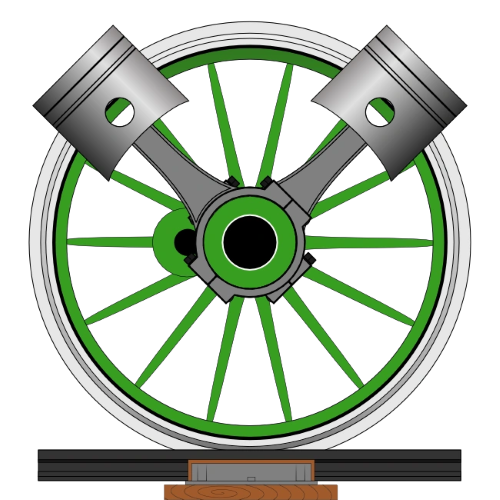
An NCDOT F59PHI.
The EMD F59PHI is a quasi-high speed locomotive produced by Electro-Motive Division (EMD) from 1994 to 2001. It features an isolated cab, lightweight body, and a streamlined shape, features that were absent on the original commuter F59PH.
First built for the California Department of Transportation, the F59PHI has seen service in all four corners of America, (Mostly seen in California) as well as in the Pacific Northwest/Montreal area in Canada.
History
In 1990, the State of California passed a bill that would result in massive funding for the state transportation systems. It also resulted in a separate, state funded system of regional Amtrak routes.
CDoT wanted a locomotive that was both reliable and attractive. They approached EMD, who responded with the lightweight, high-speed F59PHI locomotive.
Soon after, more orders arrived. Amtrak ordered 21 of these locomotives for their Pacific Sufliner service (separate from Amtrak California), and the North Carolina Department of Transportation also selected it as their primary motive power. West Coast Express (operated by TransLink) in Metro Vancouver, also selected it for starting up its service.
Montreal's Agence de Metropolitaine de Transport bought 11 of these locomoties to go with their Bombardier BiLevel coaches, which were just arriving.
The F59PHI was produced until 2001. It was taken off of EMD's lineup because it wasn't able to meet the EPA Tier 1 regulations.
Some of Amtrak California's F59PHI's have been rebuilt by EMD, these are ECO repowers.
Sound Transit's 2015 budget outlines plans to overhaul seven F59's and four of those will be overhauled to Tier 3 standards.
Railfans generally agree that the horns on the F59PHIs are among the worst on the Amtrak system. This is primarily due to the horn being placed directly behind the exhaust stack, causing the horn's sound to become distorted by the exhaust, as well as fouled and dirtied by the exhaust. The horns were placed in this location after engineers on F40PH locomotives complained of sound vibrations from the roof-mounted horns.
Differences between the F59PHI and the original F59PH
The differences between these two locomotives are only skin-deep. Most features introduced on the F59PH, like the separate HEP genset, were carried over to the F59PHI. However, differences include:
- A lighter, streamlined body (made of fibreglass and composite material)
- An increase in horsepower (12V710G3C engine compared to the F59PH's 12V710G3A)
- 3200hp vs 3000hp
- Isolated cab (hence the "I" in its designation)
- Increased speed (max speed: 110mph)
